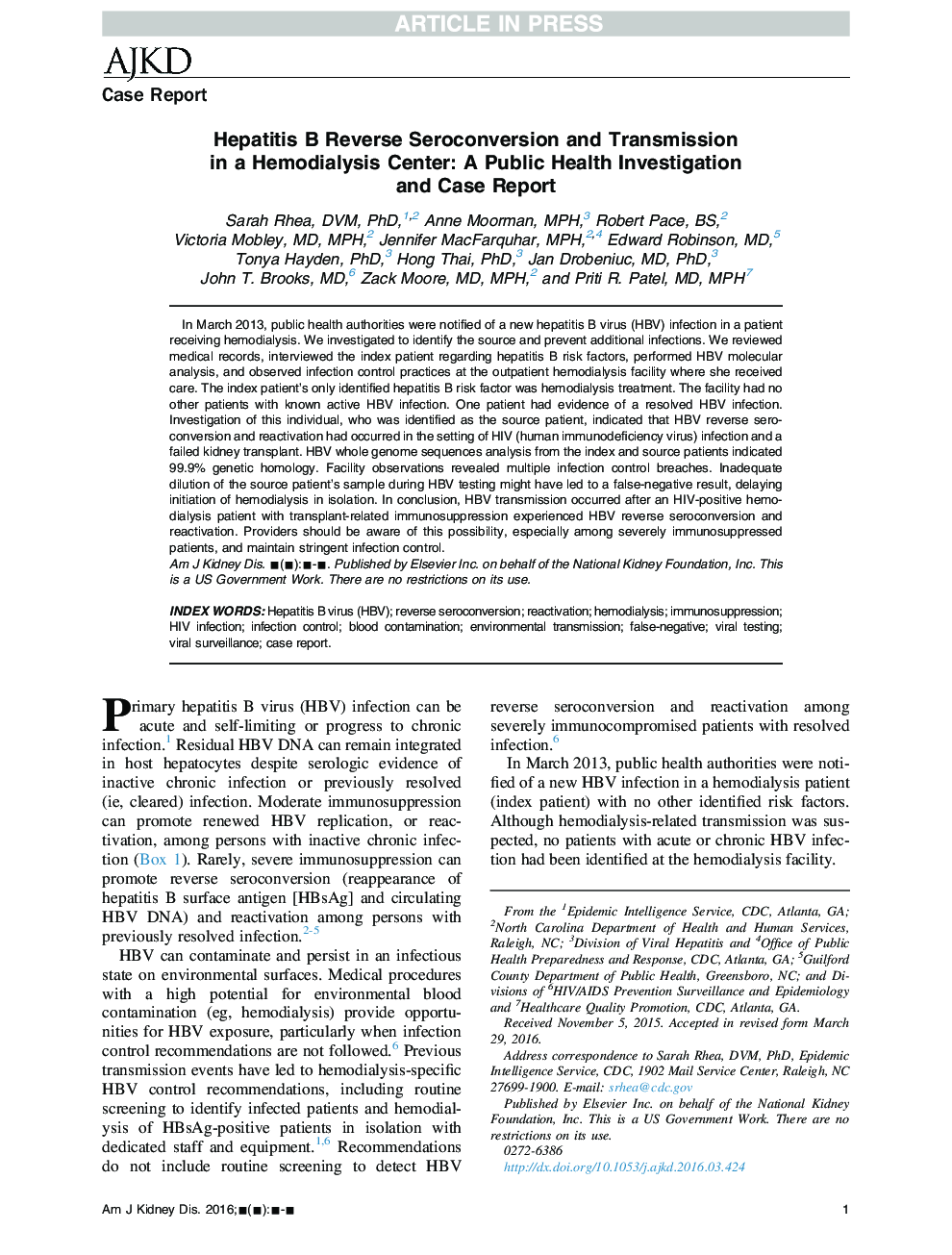| Article ID | Journal | Published Year | Pages | File Type |
|---|---|---|---|---|
| 3847361 | American Journal of Kidney Diseases | 2016 | 4 Pages |
Abstract
In March 2013, public health authorities were notified of a new hepatitis B virus (HBV) infection in a patient receiving hemodialysis. We investigated to identify the source and prevent additional infections. We reviewed medical records, interviewed the index patient regarding hepatitis B risk factors, performed HBV molecular analysis, and observed infection control practices at the outpatient hemodialysis facility where she received care. The index patient's only identified hepatitis B risk factor was hemodialysis treatment. The facility had no other patients with known active HBV infection. One patient had evidence of a resolved HBV infection. Investigation of this individual, who was identified as the source patient, indicated that HBV reverse seroconversion and reactivation had occurred in the setting of HIV (human immunodeficiency virus) infection and a failed kidney transplant. HBV whole genome sequences analysis from the index and source patients indicated 99.9% genetic homology. Facility observations revealed multiple infection control breaches. Inadequate dilution of the source patient's sample during HBV testing might have led to a false-negative result, delaying initiation of hemodialysis in isolation. In conclusion, HBV transmission occurred after an HIV-positive hemodialysis patient with transplant-related immunosuppression experienced HBV reverse seroconversion and reactivation. Providers should be aware of this possibility, especially among severely immunosuppressed patients, and maintain stringent infection control.
Keywords
Related Topics
Health Sciences
Medicine and Dentistry
Nephrology
Authors
Sarah DVM, PhD, Anne MPH, Robert BS, Victoria MD, MPH, Jennifer MPH, Edward MD, Tonya PhD, Hong PhD, Jan MD, PhD, John T. MD, Zack MD, MPH, Priti R. MD, MPH,
